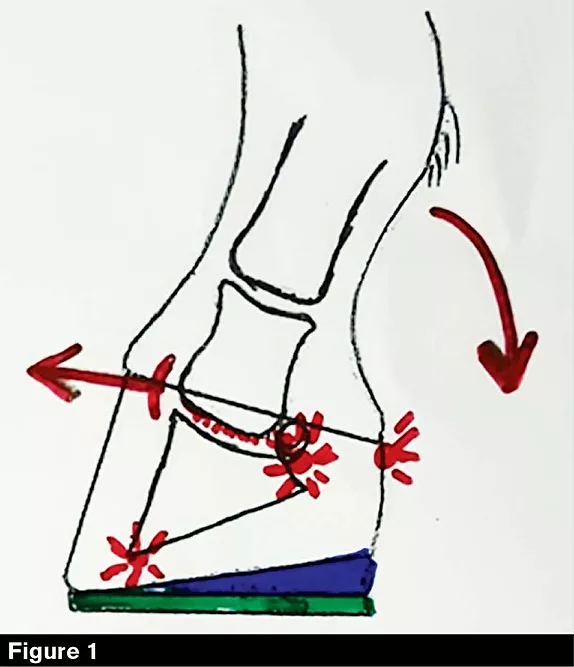American Farriers Journal
American Farriers Journal is the “hands-on” magazine for professional farriers, equine veterinarians and horse care product and service buyers.

Inappropriate wedging on an upright/boxy hoof may create a broken forward coffin joint, increased descent of the fetlock, more pitch in the coffin bone (potential remodeling), and increased strain on the SDFT and suspensory ligament.
Subsequent adjustments may change the flexor muscle body and cause asymmetrical limb imbalances and diagonal compensation.
Hoof angle asymmetry, defined as a high/low mismatched forefoot conformation, is common in horses. Hoof angle asymmetry can cause compensatory changes in flexor and extensor muscle body, shape, structure and functionality, causing a shortened stride on one side, affecting multiple areas of horse management.
With horses, like most things, one size does not fit all. A farrier’s priority is to help determine the cause of an issue and decide if that cause can be eliminated within the realm of farrier responsibility. Hoof angle asymmetry may cause, or be caused by, conformation and body imbalances in a horse.
Farriers must decide whether muscles can be reconditioned to effect a change in hoof angle, or if existing hoof angles should be maintained and supported. If considering a change in hoof angle, for whatever reason, we must acknowledge the resultant direct or indirect adaptations, both statically and dynamically, the whole horse will experience. I caution against trimming and shoeing for posture, as posture is always changing. The cause of the postural change should be identified and rectified by a team of equine professionals, with the assistance of supportive trimming and shoeing, if deemed appropriate.
Hoof angle asymmetry may be caused by limb length disparity, either actual, due to skeletal structure, or apparent, due to muscle imbalance in opposing limbs.
Farriers may be inclined to use wedge pads in horses with limb length disparity. In my opinion, wedging can be beneficial under the right circumstances, but if used should be temporary, with gradual reduction…